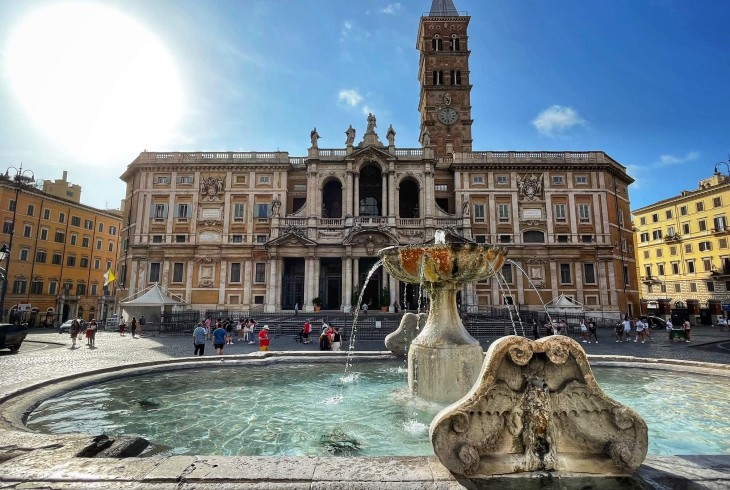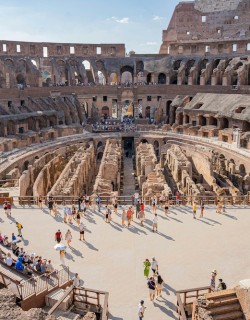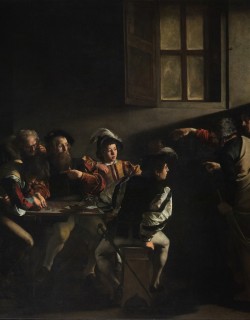Every year on August 5th, right at the height of the fierce Italian summer, Romans descend on the ancient basilica of Santa Maria Maggiore to celebrate one of the city’s strangest miracles.
The subject of the festivities is La Madonna Della Neve, or the Madonna of the Snows, and features the recreation of a miraculous summer snowfall that, according to venerable Christian legend, took place at the site of the future church on this day in the year 358 AD.
The annual modern spectacle, which is organised by the Italian Ministry of Culture in conjunction with the Vatican authorities and has been ongoing since 1983, includes the artificial snowfall - snowflakes are represented by foaming suds blown through the stifling summer air - a spectacular light show where a kaleidoscope of coloured lights flicker and illuminate the beautiful church facade, and a musical performance and parade by the Carabinieri police band. Reminding us that this is a religious celebration, two masses of Thanksgiving to the Madonna take place at 10 am and 5 pm. But what is the legend of the miraculous Snow, and why is the story so important for the church of Santa Maria Maggiore?
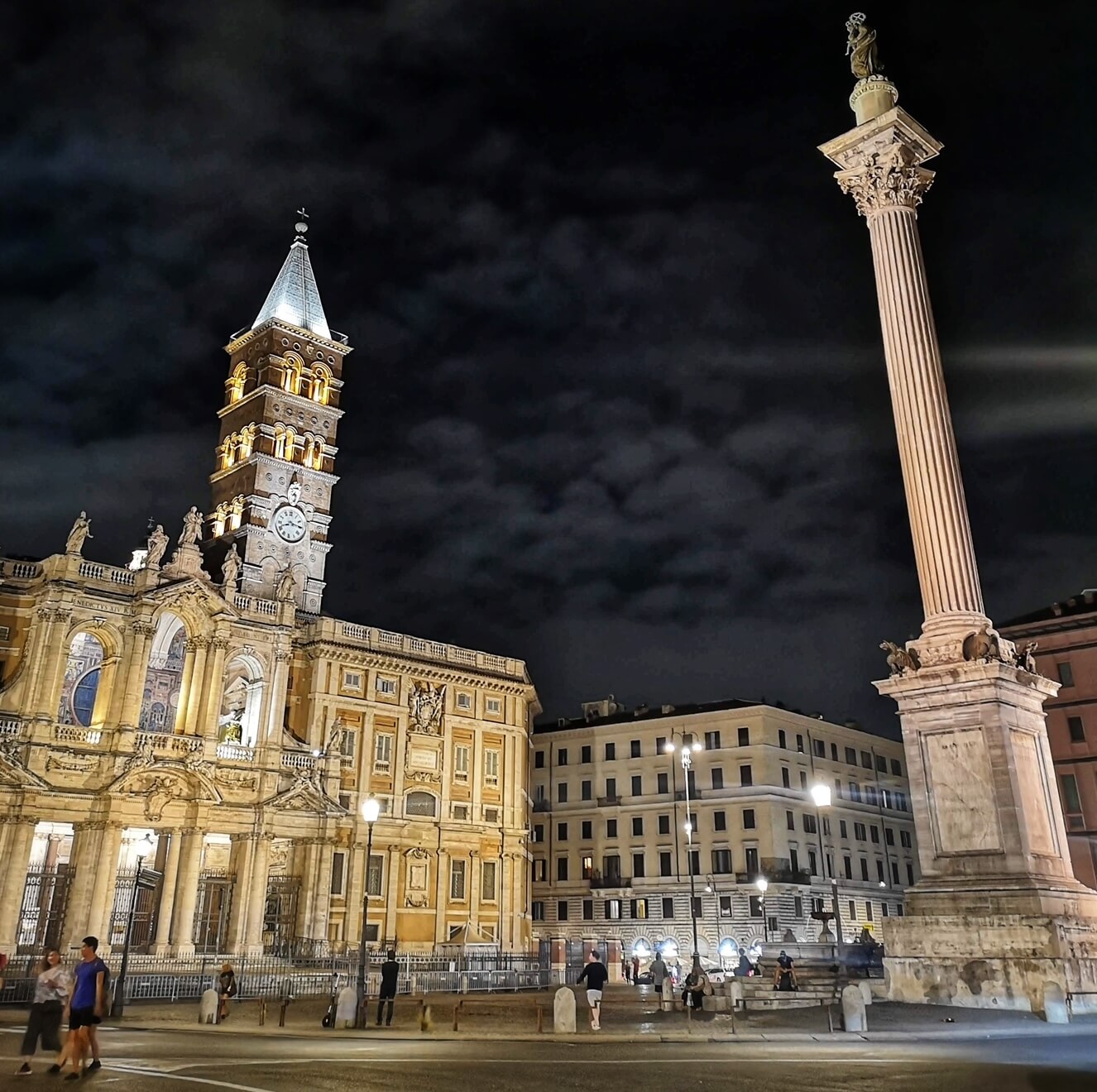 Santa Maria Maggiore at night
Santa Maria Maggiore at night
The story takes us all the way back in time to the fourth century. The practising of Christianity had only been legalised by the Emperor Constantine a few short decades earlier, and the Faith still had some way to go before it would finally become the dominant religion of the Empire. Nonetheless, Christianity was attracting plenty of converts in Rome from all classes of society, and amongst the zealous new converts was a wealthy nobleman by the name of Giovanni and his wife.
The childless couple had plenty of cash that they wished to use to aid the Christian community, and so they prayed to the Virgin Mary for advice on how to best use their capital. The Madonna soon obliged, appearing in a dream to the couple in which she instructed them to finance a new church at the side of the miraculous summer snow that would fall that very night on Rome‘s Esquiline Hill.
Setting out in search of the promised site, Giovanni soon ran into pope Liberius, who it turned out had experienced the same vision and was himself searching for the location of the promised snow.
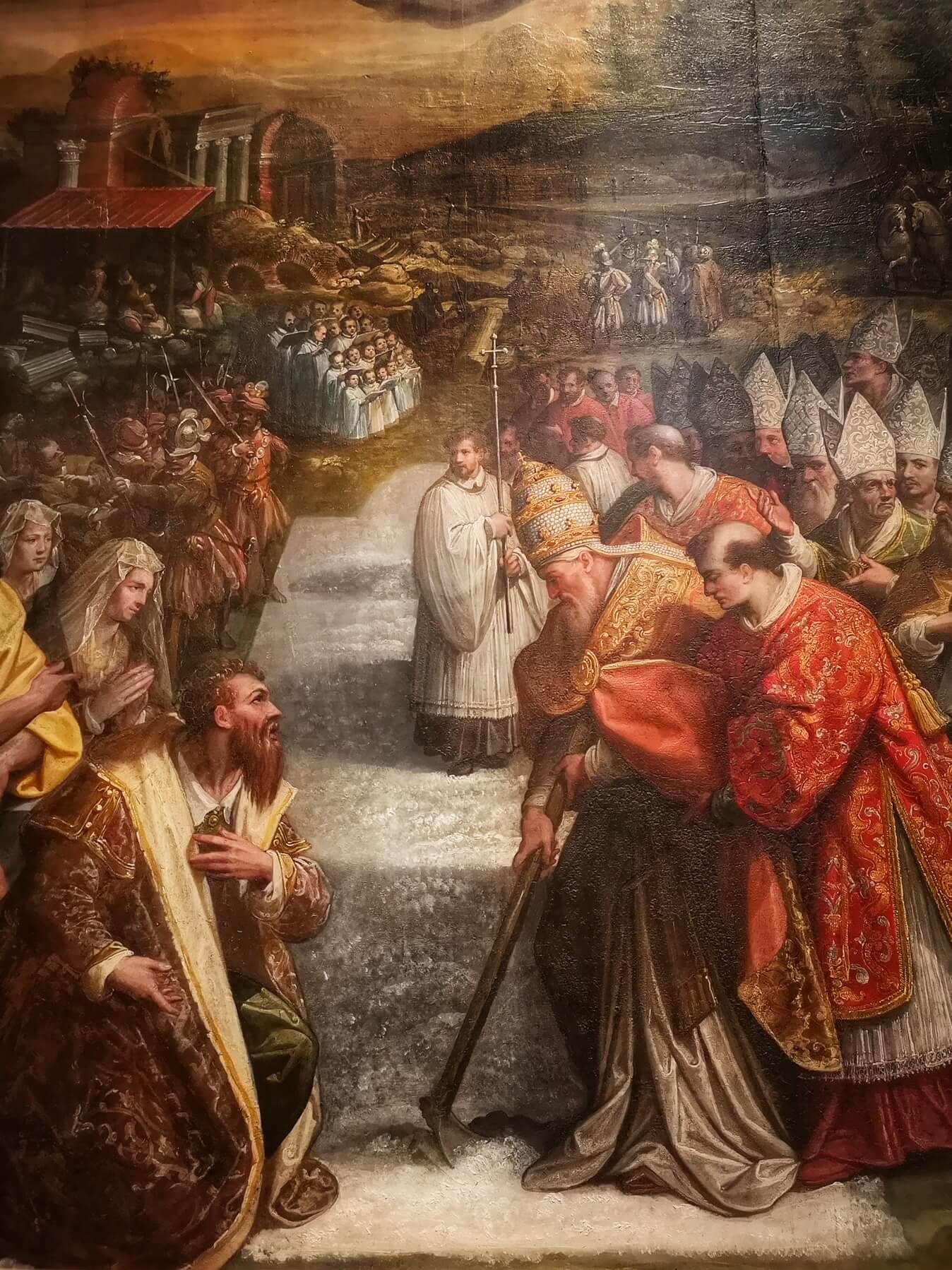 Jacopo Zucchi's Miracle of the Snow, Vatican Pinacoteca
Jacopo Zucchi's Miracle of the Snow, Vatican Pinacoteca
Having found the thick white carpet of snow on the Esquiline slopes, the pontiff proceeded to trace the outline of the church-to-be in the snow. Masons and artisans were soon called to the site, and construction on the basilica began with Giovanni and his wife’s largesse funding the works. A beautiful 16th-century painting now in the Pinacoteca of the Vatican Museums by the artist Jacopo Zucchi shows an eager crowd gathered around the summer snow as the Pope marks out the perimeter of the basilica walls with a hoe, as a motley cast of bishops, prelates and altar boys watch on. Giovanni and his wife kneel in wonder at the miraculous event.
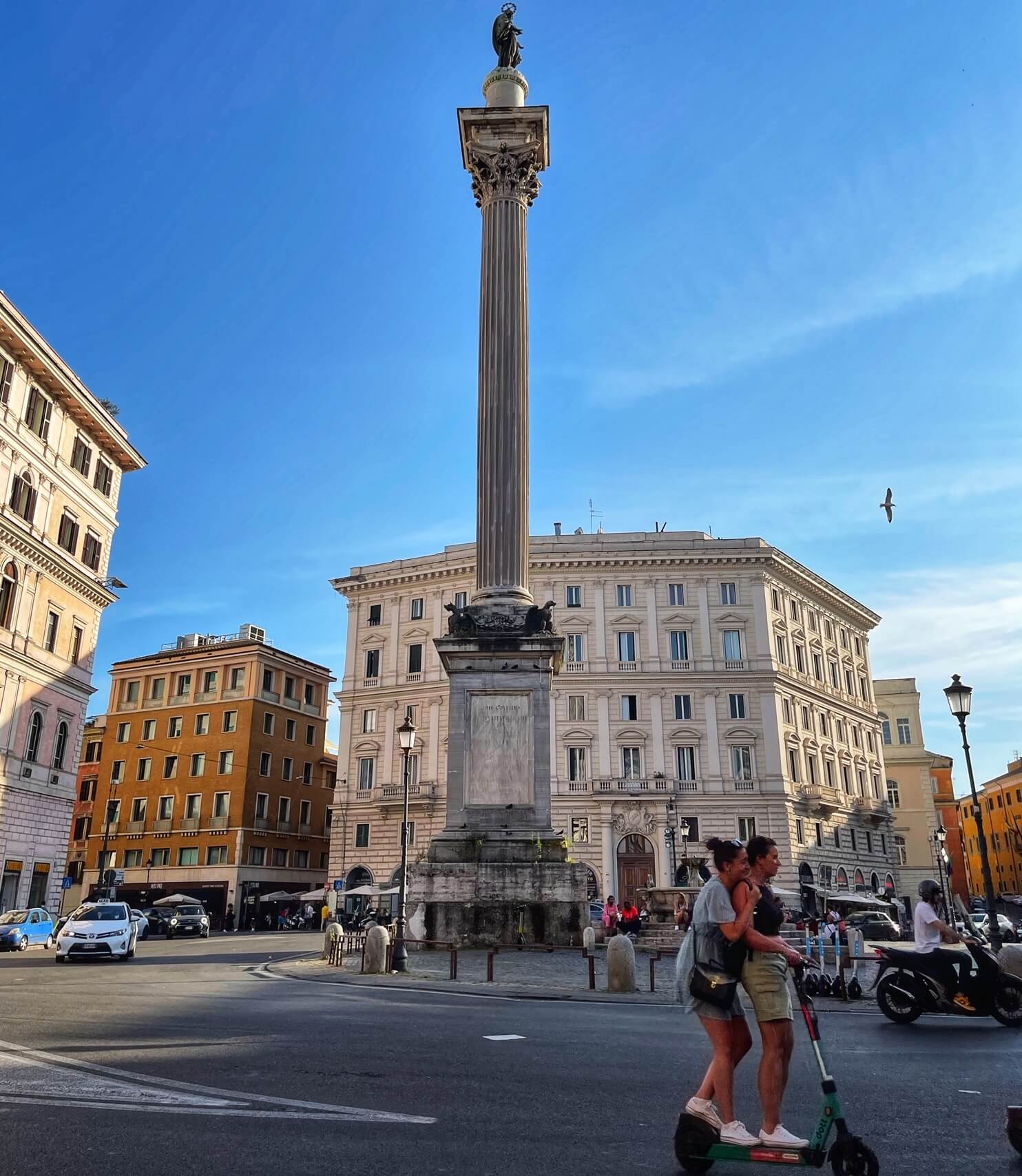 The Virgin Mary looks down over Piazza Santa Maria Maggiore from the Column of Peace
The Virgin Mary looks down over Piazza Santa Maria Maggiore from the Column of Peace
No trace of the original basilica traced by Liberius on that distant snowy morning remains - the church now standing on the site is still pretty ancient however, dating from the 430s. Within, an original cycle of 5th-century mosaics high on the nave walls beneath the windows are amongst the oldest and most beautiful Christian artworks in Italy. Vibrant scenes from the Old Testament lives of the patriarchs Abraham, Isaac, Jacob and Moses are represented in the realistic style of classical art, contrasting with the fabulous, more abstract 13th-century Byzantine mosaics in the apse. In the crypt beneath the high altar meanwhile are supposed remains of Christ’s manger, housed in an elaborate crystal reliquary. Santa Maria Maggiore is a must-visit on any trip to Rome!
The festival of the miraculous snowfall at Santa Maria Maggiore will take place between 9 PM and midnight in the piazza in front of the basilica on Saturday 5th August 2023.
